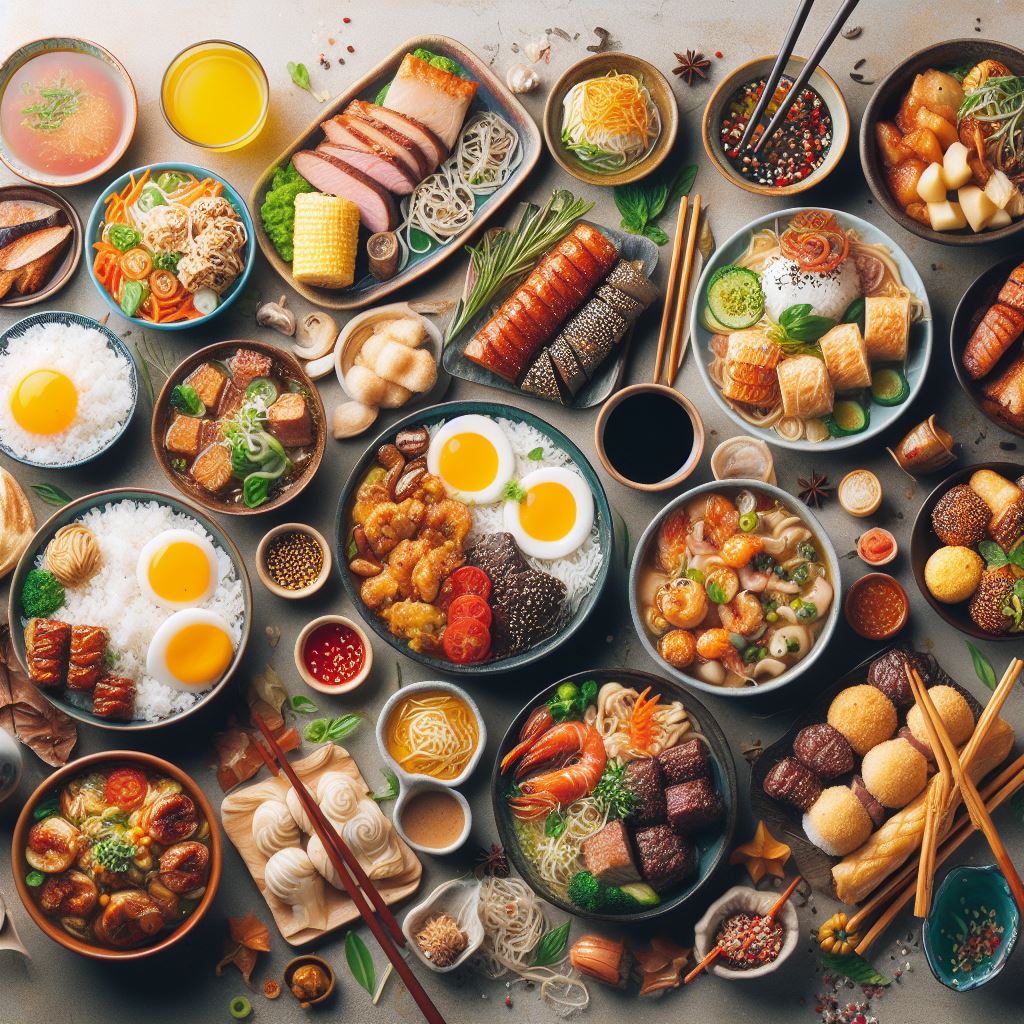Introduction to Asian Cuisine
Asian cuisine encompasses a diverse range of dishes and culinary traditions that reflect the rich cultural heritage of the continent. From the spicy flavors of Southeast Asia to the umami-rich dishes of East Asia, Asian foods offer a tantalizing array of tastes and textures. This guide will take you on a culinary journey through some of the most popular and unique Asian foods, highlighting their origins, ingredients, and preparation methods.

The Rich Tapestry of Asian Foods
Chinese Cuisine: A Fusion of Flavors
Chinese cuisine is known for its bold flavors and variety. Key regional cuisines include:
- Cantonese: Famous for its dim sum and seafood dishes.
- Sichuan: Known for its spicy and numbing flavors, utilizing Sichuan peppercorns.
- Shandong: Renowned for its fresh, light flavors and emphasis on seafood.
- Hunan: Characterized by its hot and sour flavors.
Popular Dishes:
- Peking Duck: A Beijing specialty with crispy skin and tender meat.
- Kung Pao Chicken: A spicy, stir-fried dish with peanuts, vegetables, and chili peppers.
- Dim Sum: A variety of small dishes served with tea, including dumplings, buns, and rolls.
Japanese Cuisine: Elegance in Simplicity
Japanese cuisine emphasizes fresh, high-quality ingredients and meticulous preparation. Key components include:
- Rice: The staple of Japanese meals.
- Seafood: Especially raw fish, such as in sushi and sashimi.
- Soy Products: Including tofu and soy sauce.
Popular Dishes:
- Sushi: Vinegared rice paired with raw fish, vegetables, and other ingredients.
- Ramen: Noodle soup with various broths and toppings.
- Tempura: Lightly battered and deep-fried seafood and vegetables.
Korean Cuisine: Harmony and Balance
Korean cuisine is noted for its balance of flavors and emphasis on fermented foods. Core ingredients include:
- Kimchi: Fermented vegetables, usually cabbage, with a spicy kick.
- Gochujang: A fermented red chili paste used in many dishes.
- Sesame Oil: A key flavoring agent.
Popular Dishes:
- Bibimbap: A mixed rice dish with vegetables, meat, and a fried egg.
- Bulgogi: Marinated and grilled beef.
- Tteokbokki: Spicy rice cakes often enjoyed as street food.
Read more at: Discover Asia: Top Destinations to Explore
Thai Cuisine: A Symphony of Flavors
Thai cuisine is known for its vibrant flavors, combining sweet, sour, salty, and spicy elements. Essential ingredients include:
- Lemongrass: Adds a citrusy aroma to dishes.
- Coconut Milk: Used in curries and desserts.
- Fish Sauce: A salty condiment used in various dishes.
Popular Dishes:
- Pad Thai: Stir-fried rice noodles with shrimp, tofu, and peanuts.
- Tom Yum Goong: A hot and sour shrimp soup.
- Green Curry: A coconut-based curry with green chilies, vegetables, and meat.
Indian Cuisine: Spices and Aromatics
Indian cuisine is rich in spices and varies significantly across regions. Key spices include:
- Turmeric: Adds a vibrant yellow color and earthy flavor.
- Cumin: Provides a warm, aromatic note.
- Garam Masala: A blend of ground spices used in many dishes.
Popular Dishes:
- Butter Chicken: A creamy tomato-based curry with tender chicken.
- Biryani: A fragrant rice dish with spices, meat, and vegetables.
- Samosas: Deep-fried pastries filled with spiced potatoes, peas, and sometimes meat.
See more: Discover Asia’s Top Luxury Resorts
Conclusion
Asian cuisine offers a rich and diverse culinary experience, with each country contributing unique flavors and cooking techniques. From the spice-laden dishes of India to the elegant simplicity of Japanese cuisine, there is something to satisfy every palate. By exploring these foods, we can gain a deeper appreciation for the cultural heritage and culinary artistry of Asia.












